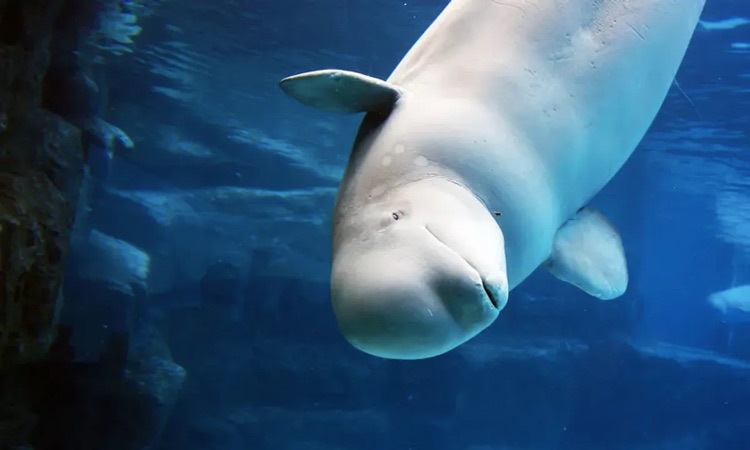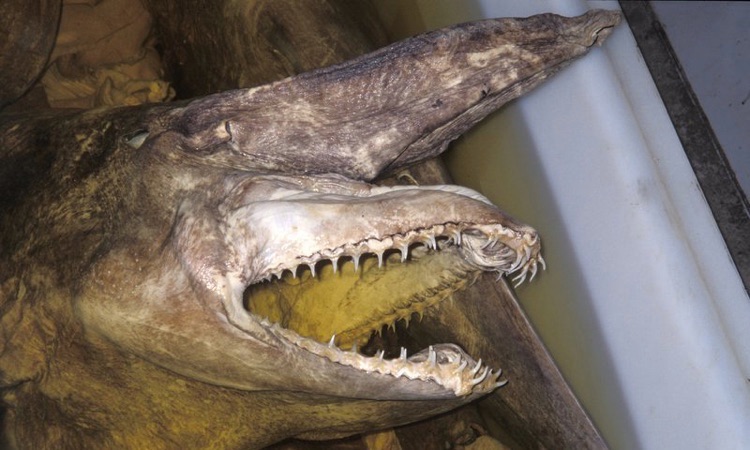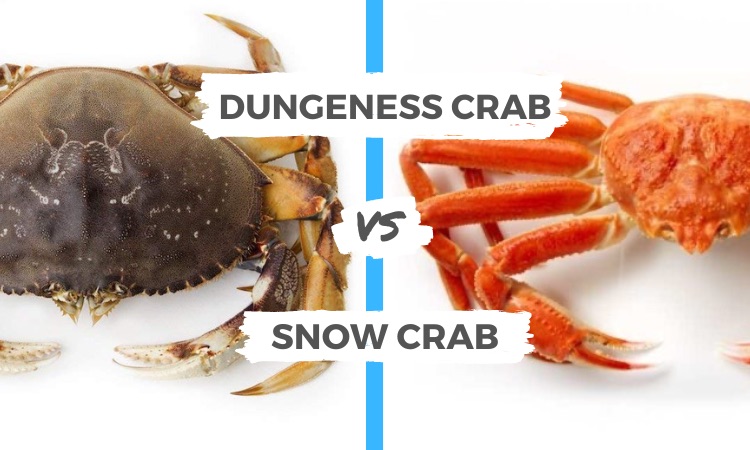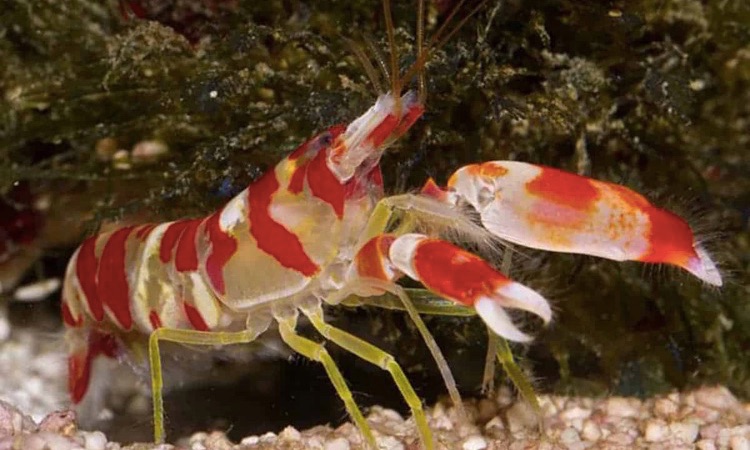The Beluga whale (Delphinapterus leucas) is a one-of-a kind aquatic mammal who thrives in Arctic waters. Because of its special traits, the species has earned some heartwarming nicknames over time:
- White Whale: Boasting a naturally all-white exterior, the beluga is one of few whales that can blend in with their surroundings due to sea ice’s bright white hue. Their camouflaged state helps protect them from potential predators.
- Melonhead: Beluga whales are able to utilize echolocation in their everyday lives, thanks to a unique organ called the melon that is located near the front of their skull.
- Sea Canary: Belugas are renowned for their constant vocalizations, which range from shrill bird-like calls to softer tones used for hunting, mating and other forms of communication.
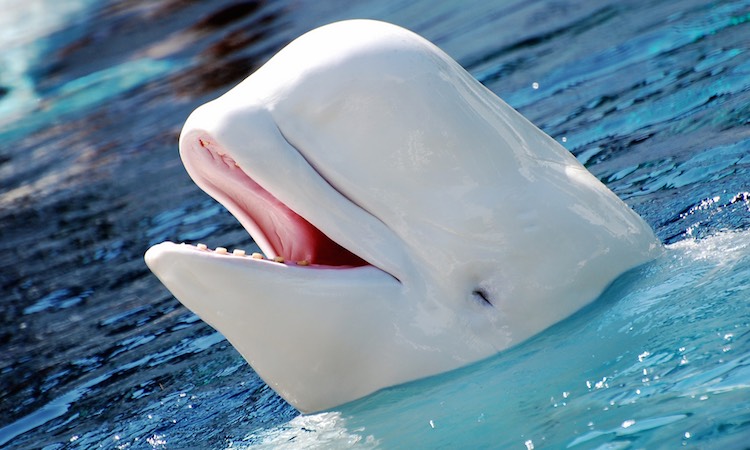
Belugas are highly social animals who live in groups of 2 to 20 individuals on average. The highest population size usually at 10.
Belonging to the infraorder Cetacea alongside dolphins, porpoises, and sperm whales, these friendly creatures have only one direct relative. This is the narwhal, making them a truly unique species within Monodontidae family.
Beluga whales have several unmistakable traits that set them apart from other Cetacea species. Namely, the ability to molt their skin and lack of a dorsal fin.
Every year, these majestic creatures thicken their outer layer until it turns yellowish in colour before being removed through contact with the ocean floor. Moreover, belugas are one of few Cetacean species who do not possess a dorsal fin. An advantage which allows them to swim beneath ice effortlessly and access air pockets for survival.
Diet of the Beluga Whale
Beluga whales have a wide-ranging diet that encompasses items such as crabs, shrimp, squid, clams and octopus. Furthermore, they are voracious eaters of fish. Codfish , herring , flatfish , salmon and eulachon make up the majority of their diet choices.
On average , a beluga whale will consume 2.5 to 3% of its body weight in food daily. This amount can range between 40 to 100 pounds depending on the size of the mammal itself!
Beluga whales are incredibly nomadic, traveling thousands of miles annually along with the changing seasons throughout the Northern Hemisphere. Thus their diet also varies depending on where they reside at any given time!
Take, for example, the Beaufort Sea. Here, Arctic cod is a primary food source of beluga whales. On the other hand, when near Greenland they have more choices – northern shrimp and Greenland halibut are just two items on their menu which can also include rose fish. Diving into deeper waters reveals another field of potential meals such as sandworms, sea snails and octopuses. Not to mention bristle worms!
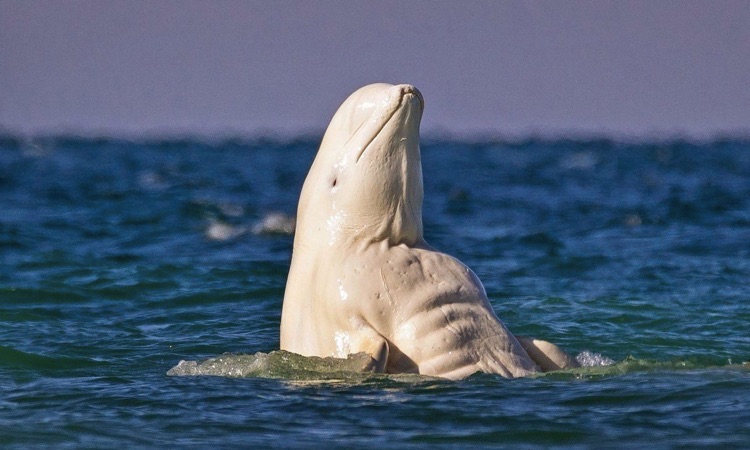
How Do Beluga Whales Catch their Prey?
A picturesque mother-child bond is on display as a Beluga whale and its calf glide through the dark depths of their aquatic home. With echolocation, these toothed whales can make sense of even the murkiest waters with limited visibility.
The remarkable maneuverability of the beluga’s neck allows them to hunt along the ocean floor with ease. Some suggest that their mouths are even able to generate a powerful suction force, allowing them to capture prey indirectly. Typically foraging at depths between 20 and 40 meters, these creatures have also been known to plunge as far down as 500 meters in search of food!
A Beluga whale’s blubber is thickest in early spring, suggesting that they feed heavily during winter. In contrast, these whales are thought to abstain from hunting while migrating through summer due to their blubber thinning out by autumn.
As a unified force, beluga whales employ a tactical strategy to take down and devour their prey. Working together, they drive schools of fish into shallow waters where they can be gulped up quickly – no need for chewing as these giants swallow everything whole.
Beluga whales are known for their distinctive echolocation organ, the melon, which is located on the front of their head. This organ serves both communication and hunting purposes in dark waters.
Researchers have even suggested that belugas may possess a form of language due to consistent vowel sounds they produce. Sadly, these creatures are extremely susceptible to human noise pollution as it alters the frequency of their calls making survival more difficult than ever before.
Do Beluga Whales Have Predators?
Although polar bears and killer whales are natural predators to beluga whales, humans have hunted them for centuries. Thankfully, in most places across the globe this has been unlawful. Yet poaching is still a grave issue that needs to be addressed immediately!
As winter wraps its icy blanket around the arctic, enormous expanses of sea quickly become solidified. When beluga whales go searching for warmer waters, they often find themselves blocked by sheets of ice and unable to resurface.
Thankfully though, polar bears have a keen sense that allows them to detect these creatures beneath the surface. Moreover, with remarkable strength these animals can even drag their prey—weighing up to an astounding 2000 pounds!—onto dry land in order satisfy their hunger needs.
Killer whales, with their imposing dorsal fins that can reach up to 6 feet in height, live alongside belugas in arctic waters. Unfortunately for the latter species, these predators of the sea have been observed attacking both young and adult belugas multiple times across Alaska’s seas as well as off Canada and Russia’s coasts.
The one saving grace for beluga whales is their lack of a dorsal fin which prevents killer whales from getting too near breathing holes or ice surfaces at polar regions.
